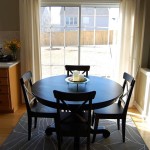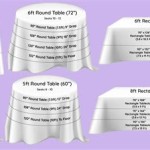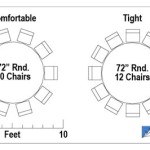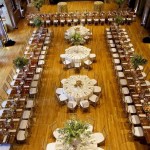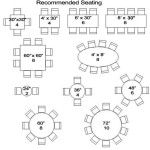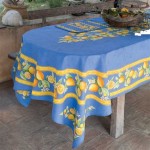36 Round Glass Table Top: A Comprehensive Guide
The 36-inch round glass table top is a versatile and aesthetically pleasing addition to various interior and exterior spaces. Its size makes it suitable for smaller dining areas, coffee tables, side tables, or even as a protective surface for existing furniture. This guide provides a comprehensive overview of the 36-inch round glass table top, covering aspects from its properties and applications to selection criteria and maintenance.
Glass, as a material for table tops, offers several advantages. It is non-porous, making it hygienic and easy to clean. Spills and stains are easily wiped away, resisting absorption that can lead to permanent marks on other materials like wood or fabric. Furthermore, glass reflects light, which can brighten a room and create a sense of spaciousness. Its transparency showcases the table's base, particularly if the base is intricately designed or constructed from an attractive material.
A 36-inch round glass table top balances functionality with visual appeal. It provides ample surface area for dining, working, or displaying decorative items, without overwhelming the surrounding space. The circular shape encourages conversation and creates a more intimate setting compared to rectangular or square tables. This guide aims to offer detailed information to assist in making informed decisions regarding the purchase and use of a 36-inch round glass table top.
Understanding Glass Properties and Types
The type of glass used for a table top significantly impacts its durability, safety, and aesthetic qualities. Common types include annealed glass, tempered glass, and laminated glass, each possessing distinct characteristics.
Annealed glass, also known as standard float glass, is the most basic type. It is produced by slowly cooling molten glass to reduce internal stresses. While relatively inexpensive, annealed glass is not recommended for table tops due to its tendency to shatter into large, sharp pieces upon impact. This poses a significant safety hazard, particularly in households with children or pets.
Tempered glass, on the other hand, undergoes a heat treatment process that makes it four to five times stronger than annealed glass. This process involves heating the glass to near its softening point and then rapidly cooling it. This creates a surface compression that increases its resistance to impact. When tempered glass breaks, it shatters into small, relatively harmless pieces, greatly reducing the risk of injury. Tempered glass is the industry standard for glass table tops due to its enhanced safety and durability.
Laminated glass consists of two or more layers of glass bonded together with a layer of plastic interlayer, typically polyvinyl butyral (PVB). This interlayer holds the glass fragments together if the glass breaks, preventing it from shattering and falling apart. Laminated glass offers exceptional safety and security and is often used in applications where impact resistance and structural integrity are paramount. While more expensive than tempered glass, laminated glass provides an added layer of protection.
The thickness of the glass also contributes to its strength and suitability for various applications. A 36-inch round glass table top should ideally be at least ¼ inch (6mm) thick for general use. For heavier items or if the table is subject to frequent use, a thicker glass, such as ⅜ inch (10mm) or ½ inch (12mm), is recommended to provide added support and prevent flexing or breakage.
Beyond safety and durability, the type of glass can also influence the table top's aesthetic appeal. Clear glass provides maximum transparency, allowing the table base to be fully visible. Frosted glass, achieved through acid etching or sandblasting, offers a degree of privacy and diffuses light, creating a softer, more subtle look. Tinted glass, available in various shades such as bronze, gray, or blue, can add a touch of color and sophistication to the table.
Edge treatments are another important consideration. Polished edges are smooth and refined, providing a clean, contemporary look. Beveled edges add a decorative touch and can enhance the visual appeal of the table. Flat polished edges are also a common and cost-effective option.
Applications and Design Considerations
The 36-inch round glass table top finds applications in a variety of settings, both residential and commercial. Its versatility allows it to be used as a dining table, coffee table, side table, or even as a protective overlay for existing furniture.
In dining areas, a 36-inch round glass table top is well-suited for smaller spaces, such as apartments or breakfast nooks. It can comfortably accommodate two to four people, making it ideal for intimate meals or casual gatherings. The round shape encourages conversation and creates a more welcoming atmosphere compared to rectangular or square tables. When selecting a base for a dining table application, it is important to consider the height and stability. The base should be sturdy enough to support the weight of the glass and any items placed on the table, and it should be at a comfortable dining height, typically around 28 to 30 inches.
As a coffee table, a 36-inch round glass table top offers a sleek and modern look. It provides ample surface area for placing drinks, books, or decorative items, while its transparency allows the underlying rug or flooring to remain visible. When choosing a base for a coffee table application, the height should be lower, typically around 16 to 18 inches. The base can be made from a variety of materials, such as metal, wood, or acrylic, depending on the desired aesthetic.
For side tables, a 36-inch round glass table top provides a sophisticated and functional surface for lamps, plants, or other decorative items. Its compact size makes it suitable for placement next to sofas, chairs, or beds. The glass surface is easy to clean and maintain, making it ideal for holding beverages or snacks. A side table base should be proportionate to the table top and should complement the surrounding furniture. The height of a side table is typically around 22 to 24 inches.
Another common application is using the 36-inch round glass table top as a protective overlay for existing furniture. Placing a glass top on a wooden table, for example, can protect the wood from scratches, spills, and other damage. This is particularly useful for antique or valuable furniture. In this application, it's important to ensure the glass top is slightly smaller than the underlying table to prevent overhang and potential chipping or breakage. The glass top should also be securely attached to the table to prevent it from sliding or shifting.
When selecting a design for a 36-inch round glass table top, several factors should be considered. The style of the table should complement the overall decor of the room. A clear glass top with a minimalist metal base would be well-suited for a contemporary setting, while a frosted glass top with a wooden base might be more appropriate for a traditional or rustic space. The color of the glass can also be chosen to complement the existing color scheme.
Selection Criteria and Maintenance
Selecting the right 36-inch round glass table top involves considering several factors to ensure it meets the specific needs and aesthetic preferences. These factors include glass type, thickness, edge treatments, base compatibility, and overall quality.
As previously discussed, tempered glass is the recommended choice for safety and durability. The thickness of the glass should be appropriate for the intended use, with ¼ inch (6mm) being suitable for general use and thicker glass recommended for heavier items or frequent use. Edge treatments should be selected based on personal preference and the desired aesthetic. Polished edges offer a clean, contemporary look, while beveled edges add a decorative touch.
The base of the table is crucial for stability and support. Ensure the base is designed to accommodate a 36-inch round table top and that it is made from a durable material. The base should also be level and sturdy to prevent wobbling or tipping. Check the base for any sharp edges or potential hazards, especially if children or pets are present.
When evaluating the quality of a glass table top, look for any imperfections, such as scratches, bubbles, or distortions. The surface should be smooth and free from any blemishes. The edges should be evenly polished and free from chips or cracks. It is advisable to purchase from a reputable supplier that offers a warranty or guarantee on their products.
Maintaining a 36-inch round glass table top is relatively simple. Regular cleaning with a mild glass cleaner and a soft cloth is sufficient to remove dust, fingerprints, and smudges. Avoid using abrasive cleaners or scouring pads, as these can scratch the glass surface. For stubborn stains, a mixture of vinegar and water can be used. Always dry the glass thoroughly after cleaning to prevent water spots.
To protect the glass table top from scratches and damage, consider using placemats or coasters when placing objects on the table. Avoid dragging heavy items across the surface, as this can cause scratches. If the table is located near a window, consider using a window film to protect the glass from UV rays, which can cause fading or discoloration over time.
Periodically inspect the edges of the glass for any chips or cracks. If any damage is detected, it is important to address it immediately to prevent further damage or potential injury. Small chips can sometimes be repaired by a professional glass repair service. However, if the damage is severe, it may be necessary to replace the table top.
By following these guidelines, one can select and maintain a 36-inch round glass table top that will provide both beauty and functionality for many years.

How To Secure Glass Table Top Base A Comprehensive Guide

Glass Table Tops A Complete Guide

How To Secure Glass Table Top Base A Comprehensive Guide

How To Secure Glass Table Top Base A Comprehensive Guide

How Do I Measure My Table To Order A Glass Top

How Do I Measure My Table To Order A Glass Top

The 7 Best Dining Tables And How To For One Reviews By Wirecutter

What Glass Thickness Is Recommended For Tabletop

How Do I Measure My Table To Order A Glass Top

Types Of Table Tops A Buyer S Guide Grain Frame
Related Posts

